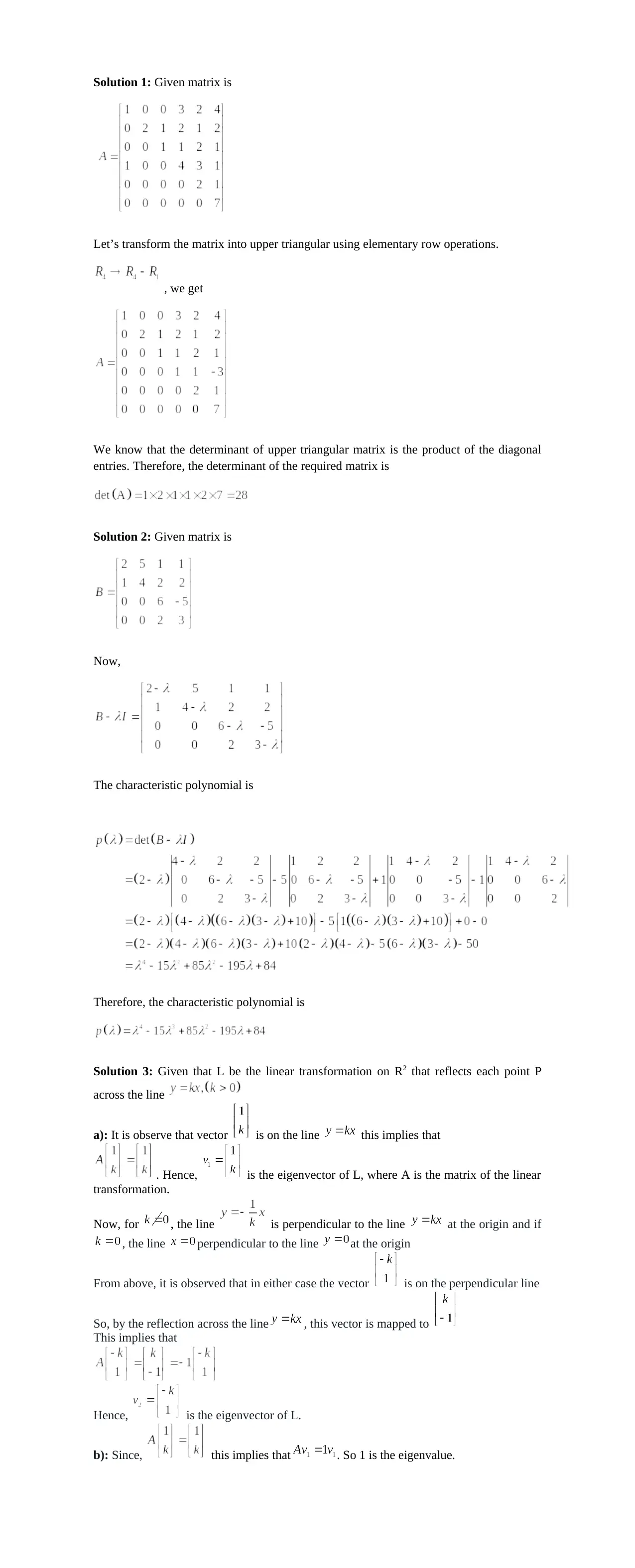Solutions for MXB106 Linear Algebra Workbook 3, Semester 1, 2019
VerifiedAdded on 2022/11/26
|2
|291
|1
Homework Assignment
AI Summary
This document presents complete solutions to the Linear Algebra Workbook 3 assignment, covering key concepts such as determinants, characteristic polynomials, linear transformations, and eigenvalues/eigenvectors. The solutions include step-by-step explanations and detailed workings for each problem, ensuring a thorough understanding of the underlying principles. The document addresses the specific questions outlined in the assignment brief, providing a comprehensive guide for students studying linear algebra. The solutions are designed to aid in the comprehension of matrix operations, the properties of linear transformations, and the calculation of eigenvalues and eigenvectors. This resource is designed to help students understand the concepts related to the assignment.
1 out of 2








![[object Object]](/_next/static/media/star-bottom.7253800d.svg)